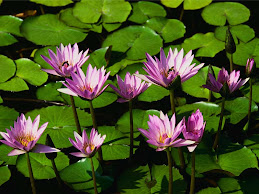 Sai Gon (Ho Chi Minh city)
Sai Gon (Ho Chi Minh city)After 1975, the government of Ha Noi renamed Sai Gon to Ho Chi Minh City. But the people never quite gotten accustomed to the new name and thus still prefer the old name, Sai Gon. In official publications, however, only Ho Chi Minh City is used.
With a population of over seven million, Sai Gon is the economic center of Viet Nam. It is also a commercial trading hub between China, Taiwan, Japan, Thailand, Malaysia, and other foreign countries. The city is bustling, with colorful free-markets and activities. The city was filled with the incessant rattling of cars, motobikes, and tri-cycles. However, this free-spirited city with tree shaded streets, old colonial architecture and gentle charms, still retains its small warm town feel. Sai Gon is also very active at night with music halls open and restaurants stay open all night long.
Sai Gon with its street markets, sidewalk cafes, sleek new pubs, pagodas and museums it is impossible to get bored in Ho Chi Minh City.
The Historical Museum
Is a huge collection of historical objects relating to the development of Viet Nam history? Situated within the famous botanical garden aged more than 100 years, it keeps the most information and objects of some civilizations in the Mekong Delta such as Oc Eo (Funan)… Botanical gardens and zoo open daily. Researchers can get special permits to stay inside its great library for study. Live water puppet shows can be enjoyed in here.
War Museum
That is a big collection of weapons and information on the modern wars in Viet Nam. It presents the war crimes caused to the Vietnamese people. Visitors can see the model of the most terrible prison and the most lethal weapons used by foreign armies in Viet Nam. A notorious guillotine is also on display.
Notre Dame Cathedral
The church was built during 1877 and 1883 by the French, who imported all materials from France- Notre Dame with Virgin Maria for many Catholic followers, so that their power in this colonial was shown. The church today is one of the Catholic center of the country. Sai Gon Archbishop is working there. Some Vietnamese Catholic saints are also worshipped there. Two services in the morning and in the afternoon are convenient for all believers. The most crowded time for the church is New Year time and Christmas...
China Town - Cho Lon
Cho Lon or China town over here is a bustling town for more than 5 million Chinese inhabitants. China town was set up by the end of 18th century when the Minh dynasty in China was overthrown. Many Chinese faithful to the Minh ran to Viet Nam for help, peace and business and were permitted by the Nguyen Lords. China town has many shops and family factories. The most interesting place is Binh Tay market built by one Chinese businessman, always crowded as a wholesale market. Walking into the Soai Kinh Lam material market is very interesting. Father Tam’s Catholic Church for Chinese is historical as the first president of the south Ngo Dinh Diem and his brother hid themselves to avoid the coup-detat in 1963. China town never sleeps with all interesting activities. Most merchandize can be purchased at wholesale price in China town.
Thien Hau Temple
Considered as one of the most ancient Chinese temple, the place is consecrated to the Sea goddess bas on Chinese folk beliefs. The temple is a place for other gods such as Money God, Mother Goddess, and Mermaid…Queer and ancient worshipping things are precious and worth seeing. A prayer for good health and business can be said after an incense coil is purchased. Good luck in doing business can be granted by the Money God after some money is offered to him.
Giac Lam Pagoda
Giac Lam pagoda, the oldest Buddhist pagoda in Sai Gon, was built in 1744 from a fund drive by Ly Thuy Long, a native of Minh Huong village, who then transferred it to Ch’an Master Phat Y. Inside this pagoda is a huge collection of old Buddha and Arhat’s statues. Ancient furnishings and statue arrangements will keep tourists interested. Things for decoration dated back some hundred years ago. It is an active temple. Prayers consist of chanting to the accompaniment of drums, bells and gongs and follow a traditional rite seldom performed these days.
Because the last reconstruction was in 1900, the architecture, layout and ornamentation have remained almost unaltered - unlike most other pagodas in this city.
soure : http://www.discover-vietnam.com/html/sightseeing_saigon.htm#hcm







